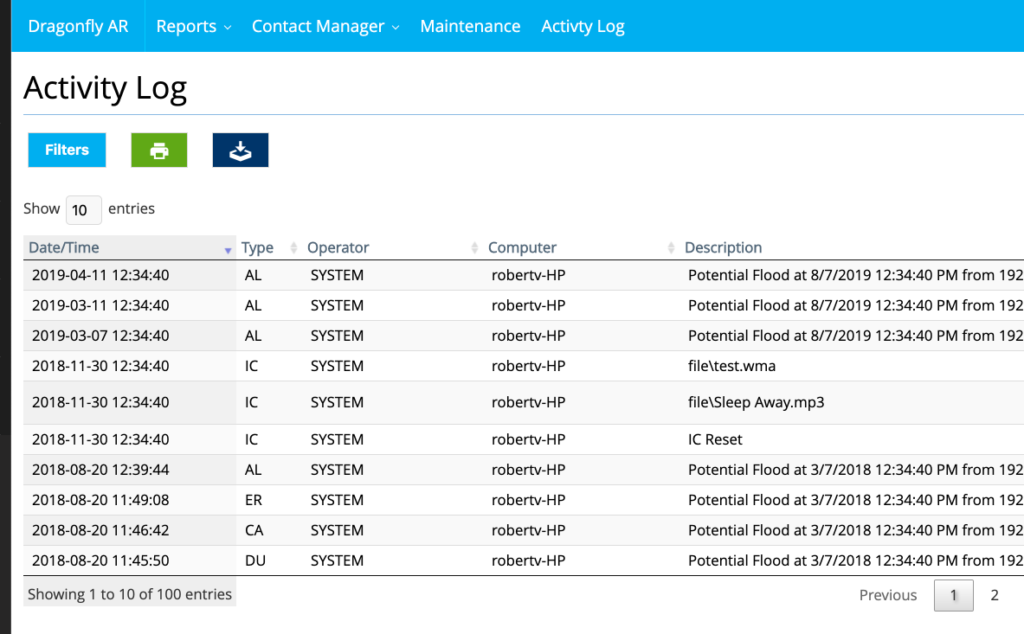Multi-site Enterprise Alarm Reporting For Detention Security
The MTI Dragonfly AR Activity Log View
As state law enforcement agencies, like the Department of Corrections, have become more technology dependent, a need for Enterprise-level security solutions has become of significant interest. Because state agencies manage multiple detention facilities spread across the state, gaining information or even being alerted to developing situations can be difficult to manage. Montgomery Technology, Inc.’s ProVision Detention Control System offers a means of centralizing administration and control of the security apparatus of these widely distributed agencies.
Because the MTI system is network-based, that network can be confined within a single building, or it can be implemented over a Wide-Area-Network, encompassing multiple sites. This high degree of scalability affords the agency with a significant array of options. In this article, we will focus on the option for Alarm/Activity reporting across a multi-site enterprise like a State DOC. There are three features of the MTI Dragonfly Activity Reporting system that are noteworthy for this effort.
#1 – Enterprise Level Architecture
The first feature of the MTI Dragonfly Activity Reporting system that is beneficial for the multi-site agency is its use of Enterprise-level (now known as “The Cloud”) architecture. This architecture relies primarily on the use of Microsoft SQL Server for its database engine. The MTI system also makes wide use of modern Web Services for standardized, secured, and abstracted communications. With the use of these two components, the MTI system can be configured to host data at each site with replication of the data offloaded to a central location, or through the use of a central location for all activity logging.
#2 – Browser-based Client Access
The MTI Dragonfly Activity Reporting system provides a browser-based client web application called “Dragonfly AR”. This web application is accessible from any major browser (Firefox, Chrome, Edge, Safari), and from any device that supports such a major browser. The applications is built upon industry-standard technologies like HTML5 with a responsive, “Progressive-Web-App” (PWA) design. This means that the application rearranges its layout to the size of the device screen, and it caches information and data so that the application remains responsive, even when the connection is poor.
Because the application is browser-based, it is highly available. There is no local application to install on the client’s computer, which means the state agency’s IT staff is not loaded down with installation requests. Additionally, there is no license to the application. It comes standard with the MTI Detention Control System.
#3 – Automated Reporting
Finally, the MTI Dragonfly Reporting system can be configured to generate automated reports which can be distributed to users via email or text message. If the agency has a local activity reporting server for each site, the administrator can configure these reports for each site to be sent on a daily, weekly, or monthly basis to a central email distribution list, effectively unifying the information from each site. Even when the agency decides to have a centralized activity database, the automated reporting is still useful for receiving regular reports of activity that might be of interest.
The application allows the administrator to configure any number of distribution groups, and each automated report can be assigned to any number of groups.
Conclusion
The flexibility and scalability offered by the MTI Dragonfly Alarm Reporting system is modern and heads above anything else provided in the detention market. This is just one feature that highlights the power of the MTI ProVision Detention Control System.
For more information about MTI products, please give us a call at 800.392.8292, or email us at “sales@montgomerytechnology.com”.
July 26, 2019
Nathan Skipper
